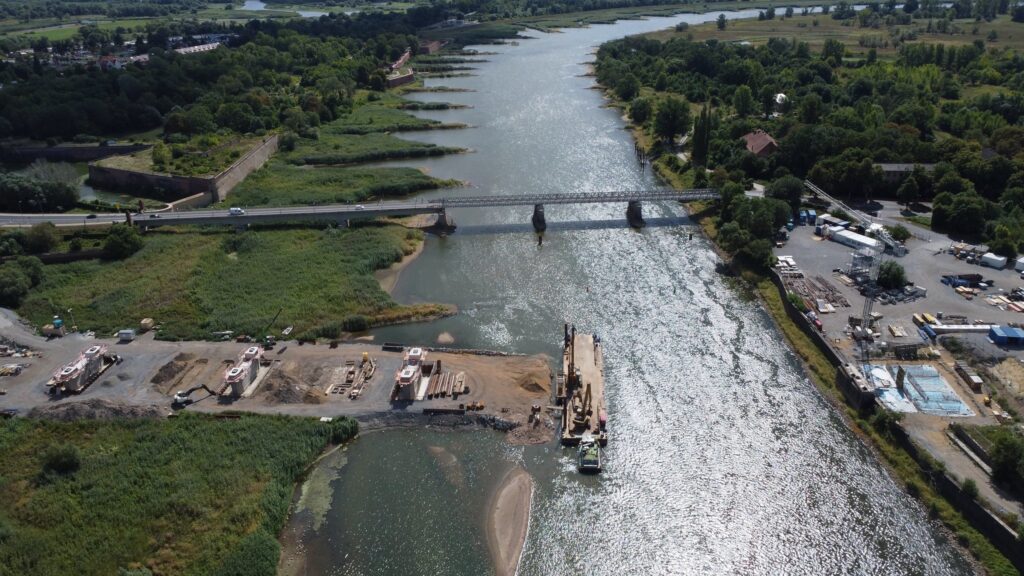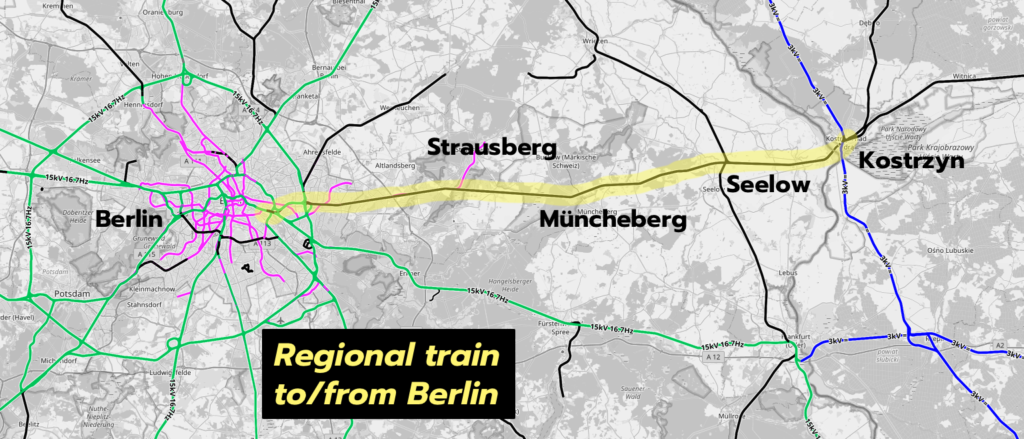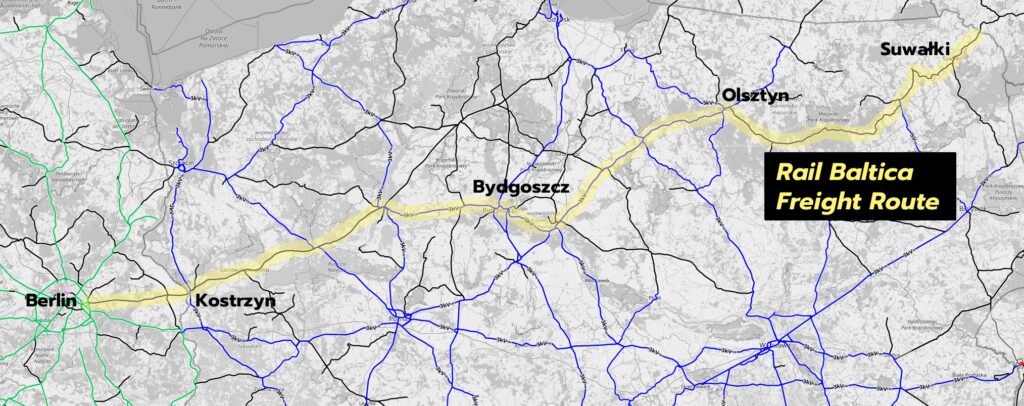The potential is for commuters, for the region, for connections to Poland, and even for freight from the Baltic states
Yesterday in Berlin I went to an event organised by Bahnkunden Verband about the need to rebuild and upgrade the Berliner Ostbahn. This is the rail line that connects Berlin and Kostrzyn in Poland, and lines onwards eastward across Poland. This was all the Königlich Preußische Ostbahn that then lost most of its purpose in 1945, but has since found new purpose since 1989. There is a further Wikipedia page about today’s route between Berlin and the border to Poland at Kostrzyn.
The route has been in the news recently because the new bridge being built over the Oder at Kostrzyn is delayed – it will now only open sometime in spring next year.

But that bridge will open, eventually. The more interesting question – and the topic of yesterday’s event – is what happens next?
IHK Ostbrandenburg has worked intensively on the topic, and has also commissioned a study from Gauff Mobility about the potential for the line. There is a summary of the conclusions and some slides similar to those shown yesterday available in public.

The problems are obvious enough.
The line – double track until 1945 – has since then been only single track. And the route is not electrified.
This poses problems first and foremost for commuters using the line – those living in Strausberg and Müncheberg and commuting to Berlin, and indeed those coming from further afield – driving to Küstrin-Kietz (the first station German side) from Poland, and taking the train from there. Trains are crowded, the capacity too low, and the single track makes operations unreliable. Double-tracking and electrifying the line would make sense for commuters, and for the economic development of eastern Brandenburg. This is the line from the commuter perspective (click to enlarge):
Zoom out a little, and there are other perspectives as well.
The Berlin – Erkner – Fürstenwalde – Frankfurt (Oder) – Rzepin – Poznan line is the main connection from Germany to Poland, for both freight and passenger trains. And it is close to capacity as well, albeit with better infrastructure (2 tracks, electrified) than the Ostbahn.
But when you view it this way, the Ostbahn – and its extension as far as Krzyż Wielkopolski – offers a secondary route to Poznan. Routing some freight this way, and indeed passenger trains as well if the line through Frankfurt (Oder) is closed for works, would make a lot of sense (click to enlarge):
And if you take that way of thinking further still, and zoom out still further, you can see the Ostbahn as part of a wider east-west corridor – to connect it with the future Rail Baltica. Passenger trains would not take this route via Olsztyn, but for freight from the Baltic states this would be a viable corridor – not least as it avoids the rail congestion in both Poznan and Warszawa (click to enlarge):
There are plenty of problems that would need to be surmounted on the Polish side too, not least the electrification of the Kostrzyn-Krzyż (already in planning) and Olsztyn-Suwałki sections (and indeed investigating those sections will be on my agenda sometime in 2024).
But let’s focus back on the German side for a moment. Double tracking and electrifying 75 route-km. Upping the speed to 160km/h. Upgrading a dozen stations. Sound protection. IHK’s 2018 estimate put the costs at €160m, but that is no doubt higher today. But even were it to be €250m that only makes this a project of medium scale.
But to make progress, the route would need to be included in the Bundesverkehrswegeplan. However the answer from the Ministry (in response to a question from Linke Members of the Bundestag, as reported here) from State Secretary Michael Theurer (FDP): “The Ostbahn is a local transport route which, as far as the federal government is currently aware, currently meets its transport needs” – an answer that is obviously not correct.
Including the route in the EU’s TEN-T comprehensive network could also be possible, medium term, but the route is not part of the TEN-T core network so not eligible for funding right away. Connecting Europe Facility or possibly even Interreg funding could also be explored too.
There is a not-for-profit association pushing for the activation of the line – the Interessengemeinschaft Ostbahn e.V. – but their website is rather bland, and does not seek to explain why the Ostbahn ought to be improved, as opposed to a whole host of other projects that could be financed instead. When I asked the speaker at the event yesterday what would he say if he had 30 seconds to explain to Volker Wissing why the Ostbahn should be funded rather than some other connection, he had no answer. To make progress we need some communication a little bit sharper than this.
So to conclude, upgrading the Ostbahn would bring benefits for commuters, would offer extra capacity between Berlin and Poznan, and would even be the start of a connection to Rail Baltica. It is exactly the sort of project that ought to be done if Germany and the EU are serious about getting passengers and freight onto the railways. But the path to get there to actually getting it started, let alone complete, looks shrouded in uncertainty and beset by inertia. We need better than this.
Maps shown in this post: my overlays on OpenRailwayMap, Electrification layer
















